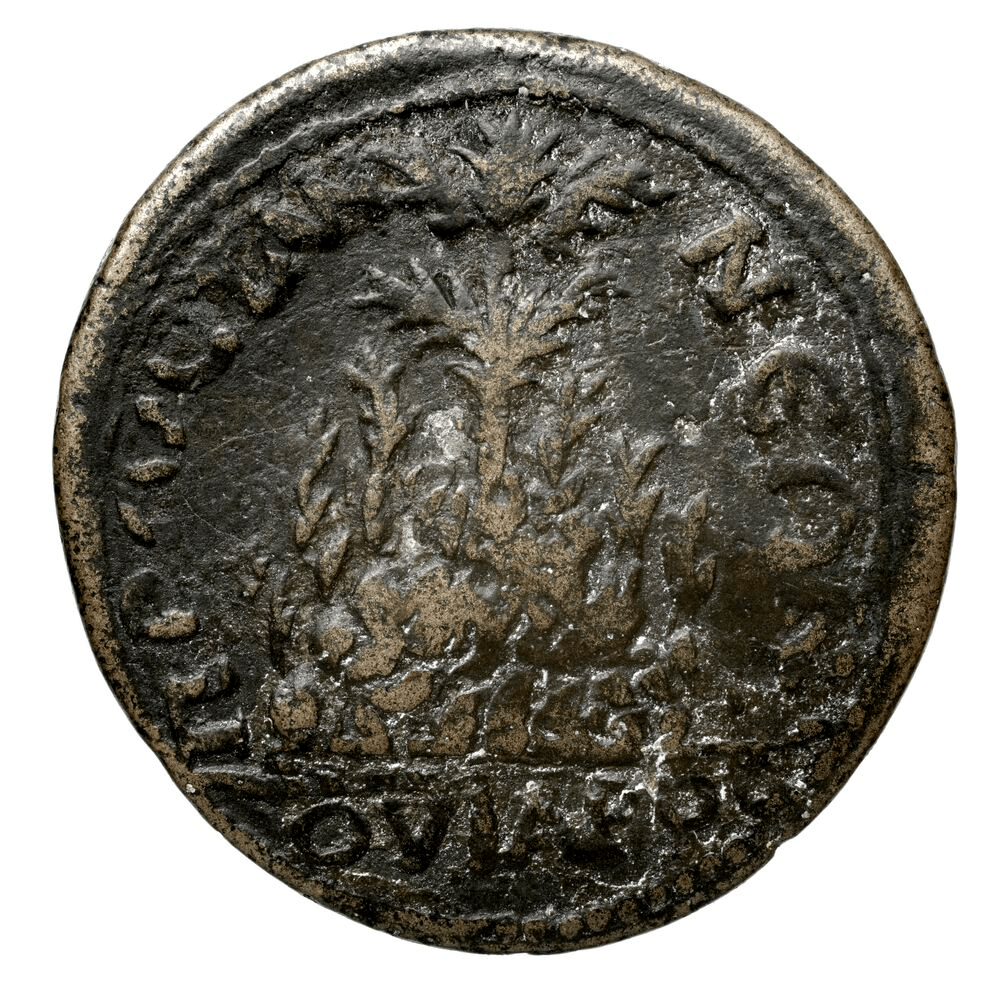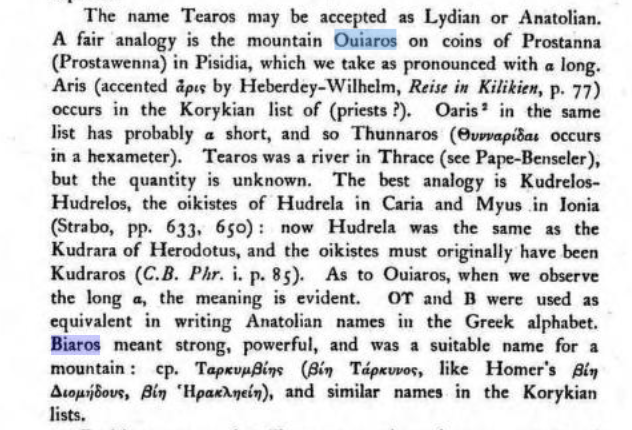I was making a silly fun morning tweet thread. It’s my habit if I need to wake up my coin brain and remind myself I love my job, but I don’t tend to put anything ‘serious’ in them. The danger of course is that I see something that I want to follow up on. So here’s a blog post to shake it out of my brain.
The offending coin is from Prostanna in Pisidia (see thread for a little more on this obscure mint).

It’s really not that mysterious, once I sorted through the headaches of the various transcriptions and spelling variations. The exergue reads OVIAPOC and the type description changes this to an Anglicized rendering Mount Viaros. I did eventually work it out. Its modern name is Davraz Dağı (or Tepe), and it has a commanding presence in the regional landscape.




The same mountain appears on two other coin types (more? let me know!)

Notice that the mountain name also appears on this coin but is spelt BIAPOC (Biaros). The different transliterations were commented on is a rather odd book from 1927. I’m not sure how seriously to take any of this speculation. (Opinions welcome.)

The mountain and the tree(s) were clearly of local meaning for a very long time. This is a coin type presumed to date from the first century BCE.

Sacred mountains are well known in Central Anatolia and perhaps in the Roman era the most famous (esp to numismatists) is Mount Argeus. Weirdly, the Wikipedia entry for the mountain says nothing about its importance culturally in the Roman period.
The people of Prostanna clearly revered their mountain for centuries and yet I can find no textual references to the mountain (Cf. ToposText), only the coins and the landscape. However that 2005 article above does a great job of bring to light the sacred spaces on the mountain itself and when joined with the coins helps us recover something of the lived experience.
So much lost human experience, but I have say if there was more linked open data (LOD) to connect all the various transliterations and to get databases to speak to each other, I’d have not spent so much time on this mountain this morning.
—
Cook in 1914 speculated that the mountain was associated with ‘Zeus’, but this is little more than a guess:

After thought.
Some scholarship on the coins of Prostanna:
Eugene Lane’s work on the temple of Men seen on the coins.

Bru. (2017). Territoires, « dieux-fleuves » et monnayages. In La Phrygie Parorée et la Pisidie septentrionale aux époques hellénistique et romaine (Vol. 401, pp. 105–143). https://doi.org/10.1163/9789004337404_010
